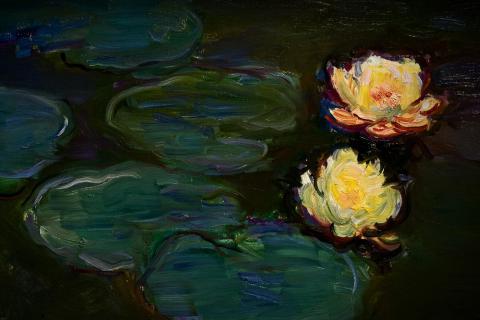
Monet’s love for flowers
The name Monet is well-known within the art community and even in many households where art is not necessarily their main focus. He was a French painter born in Paris in 1840. He painted a variety of different subject but one of the most dominant was flowers. In most cases, the flowers he painted were set in vases much like those you would order from your local florist and they are all extremely pleasing to the eye.
At the age of 15, Monet moved with his parents from Paris to Le Havre. Just three years later, he returned to France and by 1863 he was inspired by Manet’s depiction of the Fontainebleau Forest. Monet was just 25 years old when his work was first submitted to the official Salon in 1865. He passed away in 1926 but led a full life and was well traveled.
Throughout his years as an artist, Monet produced several floral paintings. At the time it was quite a popular subject for artists to focus on. Today we still enjoy decorating our homes with floral pieces of art like pictures, photographs and paintings. Two of the most famous works by Monet are “A Vase of Asters” and “Vase with Flowers”. Not only do these paintings focus on the flowers but also the stunning vases in which they are arranged and the fine polished wood tables on which they have been placed.
“Flowers and Fruit” is another one of Monet’s popular paintings and it has a bit more of a flat appearance. The vase and its contents are not painted in the same way as his other floral works. While some might say that this work of his was inferior in quality, others argue that he was simply looking to explore a different style.
“Sunflowers” and “Purple Poppies” are two paintings that are more along the same lines as his other vase flower paintings. These paintings aren’t flat at all but they focus more on the flowers since they are arranged in very simple vases and the poppies have been placed on a surface that remains unclear.
His “Spring Flowers” painting is very different in the sense that there is no vase at all. Various flowers have simply been placed on a table. The flowers are grouped and are all placed in slightly different directions. Some are propped up and others are laying flat on the table. The flowers really take up all the space in this painting with no room for much else.
Monet’s appreciation of nature and flowers is evident through his work. For those who cannot afford a real Monet, you can surely order prints of his work or take a picture of one of his floral paintings to your florist and ask them to recreate the bouquet for you to display in your home. As you gaze upon the fresh flowers, you can imagine Monet painstakingly focusing on each and every brushstroke.
